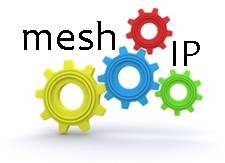 The entire architecture around the modern endpoint has changed. This is truly become evident within the healthcare field. Associates, doctors and administrators are all processing healthcare information in completely new ways. IT consumerization and mobility have certainly played a big part through all of this.
The entire architecture around the modern endpoint has changed. This is truly become evident within the healthcare field. Associates, doctors and administrators are all processing healthcare information in completely new ways. IT consumerization and mobility have certainly played a big part through all of this.
The evolution of the healthcare environment, however, is never truly complete unless we take a look at security considerations. How has the endpoint evolved to simplify security? How are we delivering workloads and applications much more efficiently? Finally – how has virtualization created the next-generation endpoint environment?
In working with some of the country’s largest healthcare providers – we’ve see a new trend evolve. IT and security directors are looking at desktop and application virtualization from a new perspective. We’re going from virtual desktop delivery – to virtual “workload” delivery. The difference? The desktop doesn’t really matter.
You’ve got an employee workstation with a nurse who just signed in. She’s using a Sasmsung Chromebox where she has direct access to:
– Web applications
– Legacy applications
– Cloud storage and data
– Windows desktops
– Windows applications
Here’s the amazing part – she doesn’t need a single client to launch any of this. Technologies from both Citrix and VMware are now enabling the direct use of HTML5 solutions. Citrix, for example, allows you to deliver entire applications and even desktops through a browser. A user is presented their resources through a unified web portal, and then a new tab is simply opened when a new resource (like an app or a desktop) is requested. The cool factor is the security and management aspect.
Policy control – Security, applications, desktops, and even user performance optimizations are controlled at the data center level. Administrators have direct insight into user, server, application, and even desktop performance from one powerful console. Furthermore, they’re able to see what users are accessing, block certain types of services, and truly lock down everything their delivering down to the endpoint. The devices, the user, and the entire experience can now be managed directly from the data center platform.
Nothing stored at the endpoint – Really no need to explain further – there is no critical information being stored at the endpoint at all. Furthermore, Chrome OS comes with its own security features like encryption and user partitioning. Regardless, when connecting into a virtual architecture with clientless capabilities – all of the applications, data, desktops and resources are always data center stored. So, your security focus can now shift to your data center infrastructure rather than worrying about losing a $200 endpoint.
Loss-control – The kinds of policies that can be wrapped around these devices is truly amazing. Not only can you ensure that nothing is actually stored at the endpoint, you can deploy policies which further secure how this device operates. For example, only allowing it to connect to a certain type of network – if something else is detected, report the device as missing and lock it down completely. They can be geo-fenced, tagged, locked down and controlled entirely. The bottom line is that you’re creating proactive endpoint loss control be securing information within the data center.
End-user optimization – Because everything is delivered virtually – new optimizations dynamically enhance the user experience while keeping the entire session secure. Adaptive user-experience orchestration looks at the dynamic changes happening within an environment. You can have a Chromebook, for example, connecting over a latent wireless connection. The virtual infrastructure at the data center layer can see higher than normal latency rates and dynamically improve compression, frame rates, and other user experience aspects to improve overall functionality.
Furthermore, you’re further introducing the concept of “secure mobility.” Just like a Chromebox, a Chromebook can also connect to a central, web-based, user portal to access apps, desktops, and other resources. Even when remote, nothing is stored at the endpoint – allowing the healthcare security administrator to have constant control over resources and data.
Ultimately, there are a lot of good reasons to look at next-generation endpoint technologies. One of the biggest revolves around security. These new types of endpoints are cost-effective, present a powerful user experience, and can be controlled from one logical management plane.
The other big piece is that all of the information, applications, and access to external resources is completely centrally controlled. Nothing is ever actually stored at the endpoint. Now, with better data center resources delivery mechanisms – the virtual experience presented to these endpoints is extremely powerful. Many healthcare organizations are looking at new ways to empower their doctors, associates and executives. One great way to do so is to start with creating a next-gen secure endpoint architecture.
Author: Bill Kleyman
Source
- The Customer Edge Drives the Need for NaaS - June 25, 2023
- Blockchain Evolves And Secures - January 13, 2019
- Bessemer Ventures’ 2018 Cloud Computing Trends - February 25, 2018




